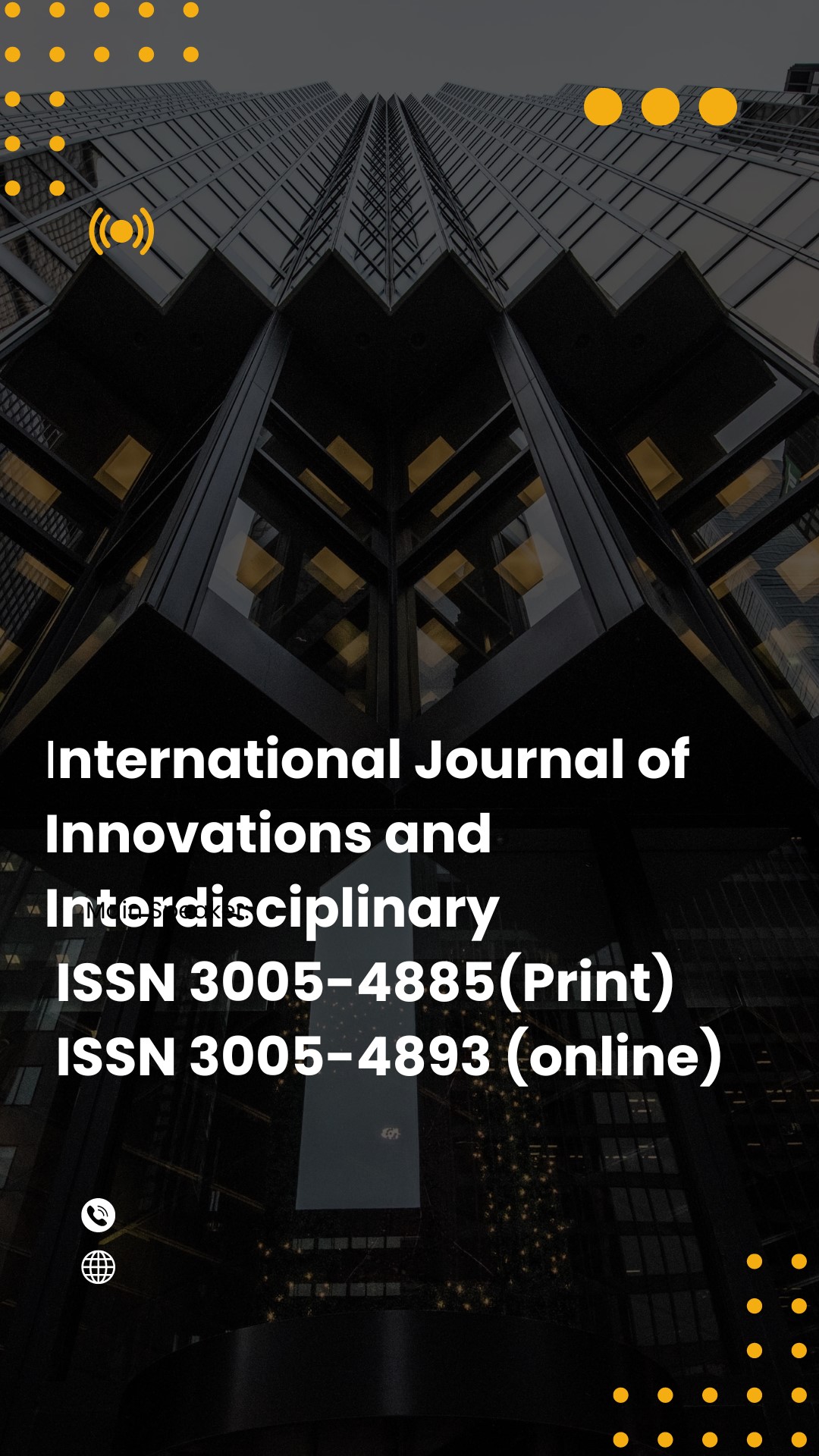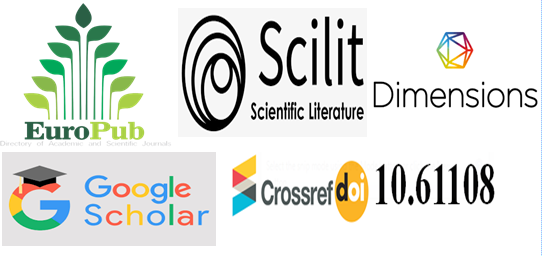Leader Technical Skills and Performance of State Agencies in Kenya.
DOI:
https://doi.org/10.61108/ijiir.v3i1.167Keywords:
Leader technical skills, Board Composition, Performance of State agencies in KenyaAbstract
This study investigated the relationship between leader technical skills and the performance of state agencies in Kenya, with a specific focus on the moderating effect of board composition. The research employed a mixed-method design with a post-positivist approach, targeting 135 state agencies in Kenya, from which a sample size of 100 was selected. Data was gathered using semi-structured questionnaires and secondary data from public annual reports. The findings indicate a significant positive relationship between a leader's technical skills and agency performance. Leader technical skills, which are defined as the practical knowledge and competencies required to manage bureaucratic systems and implement policies, were found to account for 33.6% of the variance in the performance of state agencies. The regression analysis confirmed that an increase in a leader's technical proficiency directly correlates with improved agency performance. The study's most significant finding is that board composition acts as a key moderating variable. When board composition was added to the statistical model, the explained variance in agency performance increased to 56.8%. This suggests that the effect of a leader's technical skills is amplified by a board's expertise, diversity, and independence. The conclusion drawn from this is that high performance in Kenyan state agencies is the result of a synergistic relationship between a technically skilled leader and a well-composed, competent board that provides strategic oversight and an ethical framework. Recommendations for policymakers include a dual focus on recruiting and training leaders with technical skills and reforming board appointment processes to ensure expertise, independence, and diversity
Downloads
References
. Ahearn, KK, Ferris, GR, Hochwarter, WA, & ... (2004). Leader political skill and team performance. Journal of …, journals.sagepub.com, https://doi.org/10.1016/j.jm.2003.01.004
. Eglene, O, Dawes, SS, & ... (2007). Authority and leadership patterns in public sector knowledge networks. The American Review of …, journals.sagepub.com, https://doi.org/10.1177/0275074006290799
. Gasco-Hernandez, M, Gil-Garcia, JR, & ... (2022). Unpacking the role of technology, leadership, governance and collaborative capacities in inter-agency collaborations. Government Information …, Elsevier, https://www.sciencedirect.com/science/article/pii/S0740624X22000430
. Getha-Taylor, H, & Morse, RS (2013). Collaborative leadership development for local government officials: Exploring competencies and program impact. Public Administration Quarterly, JSTOR, https://www.jstor.org/stable/24371989
. Gupta, V, Chopra, S, & Kakani, RK (2018). Leadership competencies for effective public administration: a study of Indian Administrative Service officers. Journal of Asian Public Policy, Taylor &Francis, https://doi.org/10.1080/17516234.2017.1353942
. Haq, S (2011). Ethics and leadership skills in the public service. Procedia-Social and Behavioral Sciences, Elsevier, https://www.sciencedirect.com/science/article/pii/S1877042811007361
. Hickman, L, & Akdere, M (2018). Effective leadership development in information technology: Building transformational and emergent leaders. Industrial and Commercial Training, emerald.com, https://doi.org/10.1108/ICT-06-2017-0039
. Ingraham, PW, & Getha-Taylor, H (2004). Leadership in the public sector: Models and assumptions for leadership development in the federal government. Review of Public Personnel …, journals.sagepub.com, https://doi.org/10.1177/0734371X04263323
. Joignant, A (2011). The politics of technopols: Resources, political competence and collective leadership in Chile, 1990–2010. Journal of Latin American Studies, cambridge.org, https://www.cambridge.org/core/journals/journal-of-latin-american-studies/article/politics-of-technopols-resources-political-competence-and-collective-leadership-in-chile-19902010/DBB27336B31331FE8E8C64B1C44A8850
. Jr, WL Waugh, & Streib, G (2006). Collaboration and leadership for effective emergency management. Public administration review, Wiley Online Library, https://doi.org/10.1111/j.1540-6210.2006.00673.x
. Kister, J (2001). State Leadership for Career Technical Education.., ERIC, https://eric.ed.gov/?id=ED461728
. Krause, GA, & O'Connell, AJ (2011). Compliance, competence, and bureaucratic leadership in US federal government agencies: A Bayesian generalized latent trait analysis., vanderbilt.edu, https://www.vanderbilt.edu/csdi/events/Krause_OConnell_2011_Compliance_Competence.pdf
. McCausland, JD (2008). Developing strategic leaders for the 21st century., books.google.com, https://books.google.com/books?hl=en&lr=&id=8GrbAAAAMAAJ&oi=fnd&pg=PA1&dq=leader+technical+skills+of+state+agencies&ots=XMOniFYiFT&sig=t08_It7o85lLF9fnj0T1CLgoGWI
. McCausland, JD, & Martin, GF (2001). Transforming strategic leader education for the 21st-century army. The US Army War College …, press.armywarcollege.edu, https://press.armywarcollege.edu/cgi/viewcontent.cgi?article=2052&context=parameters
. Moore, LL, & Rudd, RD (2004). Leadership skills and competencies for extension directors and administrators. Journal of Agricultural Education, jae-online.org, https://jae-online.org/index.php/jae/article/view/193
. Mouritzen, PE, & Svara, JH (2002). Leadership at the apex: politicians and administrators in Western local governments., books.google.com, https://books.google.com/books?hl=en&lr=&id=323qzZA5sEwC&oi=fnd&pg=PR7&dq=leader+technical+skills+of+state+agencies&ots=-sPDhtfIHO&sig=0OYZHaY0lYCOyVL1C1o72_omMFk
. Naquin, SS, & III, EF Holton (2003). Redefining state government leadership and management development: A process for competency-based development. Public personnel management, journals.sagepub.com, https://doi.org/10.1177/009102600303200102
. Peng, B (2022). Digital leadership: State governance in the era of digital technology. Cultures of Science, journals.sagepub.com, https://doi.org/10.1177/2096608321989835
. Radin, B (2002). The accountable juggler: The art of leadership in a federal agency., CQ Press
. Ryan, CM (2001). Leadership in collaborative policy-making: An analysis of agency roles in regulatory negotiations. Policy sciences, Springer, https://doi.org/10.1023/A:1012655400344
Downloads
Published
How to Cite
Issue
Section
License
Copyright (c) 2025 International Journal of Innovations and Interdisciplinary Research (IJIIR) ISSN 3005-4885 (p);3005-4893(o)

This work is licensed under a Creative Commons Attribution-NonCommercial 4.0 International License.
The International Journal of Innovations and Interdisciplinary Research (IJIIR) adopts the Creative Commons Attribution-NonCommercial 4.0 International (CC BY-NC 4.0) license terms for all published articles. This license governs the rights and permissions associated with the use, distribution, and reproduction of the published content, ensuring a balance between authors' intellectual property rights and the wider dissemination of knowledge.
Under the CC BY-NC 4.0 license, the following terms apply:
-
Attribution (BY): Users are required to give appropriate credit to the original authors and provide a link to the original work. Proper attribution acknowledges the intellectual contribution of the authors and allows others to trace the research back to its source.
-
NonCommercial (NC): The license prohibits commercial use of the published material. Users may not exploit the work for commercial purposes without obtaining explicit permission from the copyright holder. Non-commercial use includes activities such as selling, licensing, or monetizing the content.
-
Adaptation: The CC BY-NC 4.0 license allows users to remix, transform, or build upon the original work, but only for non-commercial purposes. Adaptations or derivative works based on the published material must also be shared under the same license terms, giving proper attribution to the original authors.
The CC BY-NC 4.0 license ensures that the published research in the International Journal of Innovations and Interdisciplinary Research remains accessible to a wide audience while respecting the intellectual property rights of the authors. It encourages the sharing, dissemination, and collaborative use of knowledge within the academic community, fostering innovation and furthering the advancement of social sciences and humanities research.
Authors publishing their work in IJIIR grant the journal the right to publish and distribute their articles under the CC BY-NC 4.0 license. This license facilitates the unrestricted availability of the research, allowing readers, educators, and researchers to access, cite, and build upon the published content, as long as they comply with the license terms.
By adopting the CC BY-NC 4.0 license, Ijiir promotes open access principles and encourages the responsible use of scholarly work. It empowers researchers to disseminate their findings widely and fosters collaboration, ensuring that knowledge generated in the field of social sciences and humanities can have a broader societal impact.






